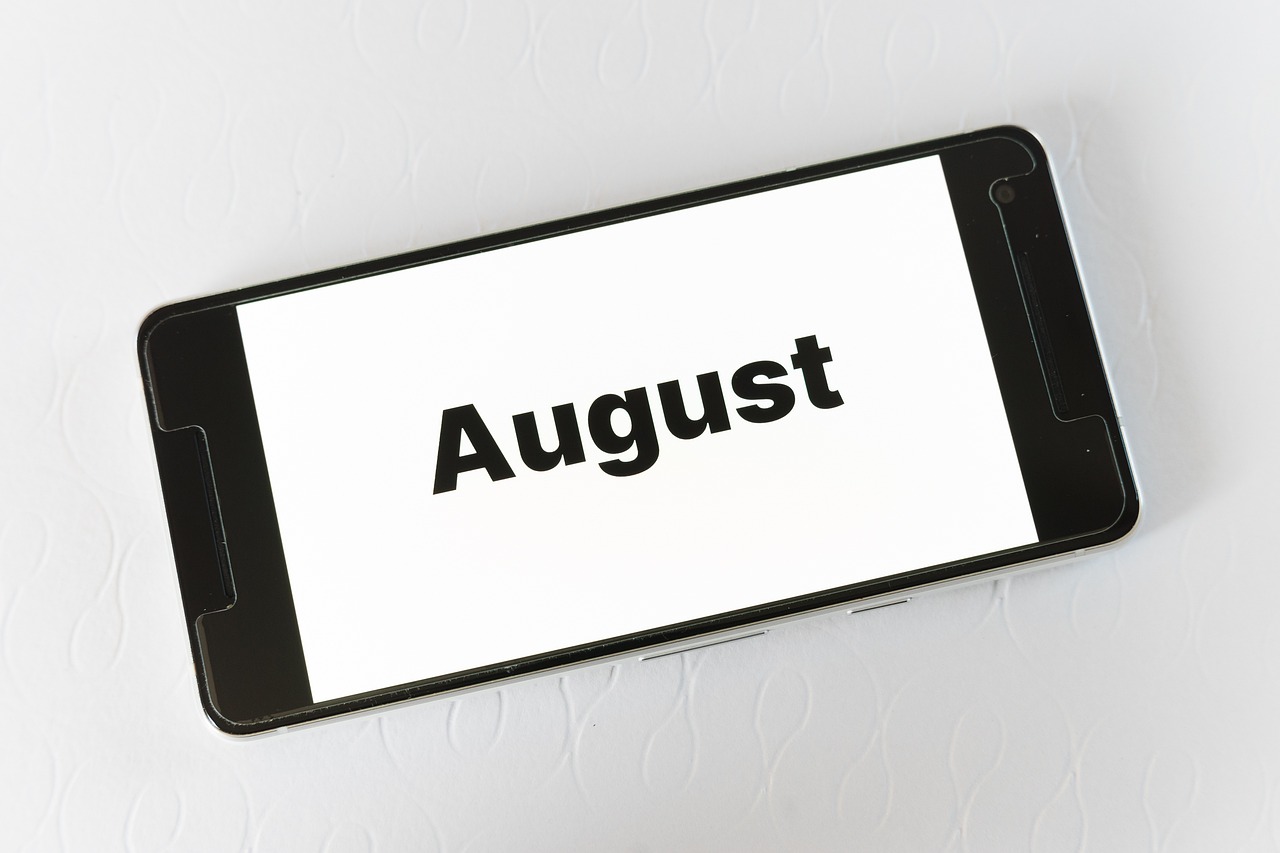How to Create a Personal Productivity Plan That Works for You
Creating a personal productivity plan tailored to your unique needs and preferences is essential for achieving your goals efficiently and effectively. By customizing your approach, you can maximize your productivity and overall well-being. Let's explore some effective strategies to develop a productivity plan that works specifically for you.

Assess Your Current Habits and Workflow
Discover effective strategies to develop a personalized productivity plan that suits your unique needs and preferences, helping you achieve your goals efficiently and effectively.
Assessing your current habits and workflow is the crucial first step towards creating a successful personal productivity plan. Take a deep dive into your daily routines and workflows to identify areas that are working well and those that need improvement. By understanding your productivity strengths and weaknesses, you can tailor your plan to maximize efficiency and effectiveness.
Consider keeping a journal or using a productivity tracking tool to document how you spend your time each day. This can provide valuable insights into where you may be losing time or getting distracted, allowing you to make informed decisions about how to optimize your workflow.
Furthermore, evaluate your habits in terms of how they contribute to or detract from your productivity. Are there specific behaviors that are hindering your progress? Are there patterns in your workflow that could be streamlined for better efficiency?
By taking the time to assess your current habits and workflow, you set the foundation for building a personalized productivity plan that is tailored to your specific needs and goals.
Setting clear and achievable goals is essential for guiding your productivity plan in the right direction. Define your objectives using the SMART criteria - specific, measurable, achievable, relevant, and time-bound. This approach ensures that your goals are well-defined and actionable, helping you stay focused and motivated.
Establishing priorities and implementing effective time management strategies are key components of a successful productivity plan. Identify tasks that align with your goals and prioritize them based on their importance and urgency. Avoid falling into the trap of multitasking, as it can lead to decreased efficiency and quality of work.
Designing a personalized task management system is crucial for staying organized and on track with your goals. Whether you prefer digital tools, traditional methods like a bullet journal, or a combination of both, choose a system that suits your workflow and helps you stay productive.
Work-life balance is essential for maintaining productivity and overall well-being. Explore strategies to prevent burnout, such as setting boundaries between work and personal time, prioritizing self-care activities, and taking regular breaks to recharge.
Take advantage of productivity tools and apps to streamline your workflow and automate repetitive tasks. From project management software to time tracking apps, there are numerous tools available to enhance your efficiency and productivity.
Monitoring your progress and making adjustments to your productivity plan are vital for continuous improvement. Keep track of key metrics, such as task completion rates and time spent on different activities, to identify areas where you can make changes for better results.
Developing healthy habits and a positive mindset is crucial for sustaining productivity in the long run. Practice self-care, mindfulness, and positive thinking to support your overall well-being and success. By prioritizing your mental and physical health, you can ensure long-term productivity and fulfillment.
Do you have any questions about creating a personalized productivity plan that works for you? Check out the following frequently asked questions for more insights:
- How can I identify my productivity strengths and weaknesses?
- What are the best tools for task management and time tracking?
- How do I maintain a healthy work-life balance while staying productive?
- What role does mindset play in long-term productivity success?

Set Clear and Achievable Goals
Discover effective strategies to develop a personalized productivity plan that suits your unique needs and preferences, helping you achieve your goals efficiently and effectively.
When it comes to setting goals, clarity and achievability are key factors that can significantly impact your productivity. By defining specific, measurable, achievable, relevant, and time-bound objectives, known as SMART goals, you provide yourself with a clear roadmap towards success.
Imagine your goals as destinations on a map. The clearer the destination, the easier it is to plan the route and navigate towards it. By setting clear and achievable goals, you not only create a sense of direction but also establish milestones to track your progress effectively.
Moreover, breaking down larger objectives into smaller, manageable tasks can make the journey less overwhelming and more attainable. This approach allows you to celebrate small victories along the way, boosting your motivation and momentum towards achieving your ultimate goals.
If you have any questions about creating a personal productivity plan or implementing the strategies mentioned in this article, check out the FAQs below:
- How long does it take to see results from a personalized productivity plan?
- What are some common pitfalls to avoid when setting goals?
- How can I maintain consistency in following my productivity plan?
- Are there any recommended productivity tools for beginners?

Establish Priorities and Time Management Strategies
When it comes to productivity, establishing priorities and effective time management strategies are crucial components. By setting clear priorities, you can focus your energy and attention on tasks that align with your goals and values. This helps you avoid getting overwhelmed by a long to-do list and ensures that you are working on what truly matters.
One effective way to establish priorities is to categorize tasks based on their importance and urgency. You can use techniques like the Eisenhower Matrix, which divides tasks into four quadrants: urgent and important, important but not urgent, urgent but not important, and neither urgent nor important. This method can help you identify tasks that require immediate attention and those that can be delegated or scheduled for later.
Time management plays a significant role in ensuring that you allocate your time wisely and efficiently. By implementing strategies such as time blocking, where you dedicate specific time blocks to different tasks or activities, you can minimize distractions and increase your focus. Additionally, using tools like Pomodoro Technique, which breaks work into intervals separated by short breaks, can help improve your productivity and prevent burnout.
Another essential aspect of time management is learning to say no to tasks that do not align with your priorities or goals. By setting boundaries and being selective about the commitments you take on, you can avoid spreading yourself too thin and focus on what truly matters to you.
Ultimately, establishing priorities and implementing effective time management strategies are key to optimizing your productivity and achieving your goals. By identifying what matters most to you and managing your time efficiently, you can work towards success while maintaining a healthy work-life balance.

Create a Personalized Task Management System
When it comes to creating a personalized task management system, the key is to find a method that aligns with your unique preferences and workflow. One approach that many find effective is using a combination of digital tools and traditional methods like a bullet journal. By blending technology with manual organization, you can tailor your task management system to suit your individual needs.
Consider starting by outlining your tasks and goals in a digital tool like a task management app. These apps often offer features such as setting deadlines, creating recurring tasks, and categorizing tasks based on priority. This digital organization can provide a clear overview of your responsibilities and help you stay on track.
In addition to digital tools, incorporating a bullet journal can add a personal touch to your task management system. A bullet journal allows for creative freedom in designing your task lists, habit trackers, and goal-setting pages. The act of physically writing down tasks can also enhance memory retention and engagement with your to-do list.
Another strategy to personalize your task management system is to categorize tasks based on urgency and importance. Using a matrix like the Eisenhower Box, you can prioritize tasks into four quadrants: urgent and important, important but not urgent, urgent but not important, and neither urgent nor important. This method can help you focus on tasks that align with your goals and values.
Remember, the key to a successful task management system is flexibility. Be open to adjusting your methods as you discover what works best for you. Whether you prefer digital reminders, handwritten lists, or a combination of both, the goal is to create a system that enhances your productivity and helps you achieve your goals efficiently.

Implement Effective Work-Life Balance Practices
Discover effective strategies to develop a personalized productivity plan that suits your unique needs and preferences, helping you achieve your goals efficiently and effectively.
Creating a harmonious work-life balance is crucial for maintaining productivity and overall well-being. Imagine your life as a scale, with work on one side and personal life on the other. Just like a scale needs to be balanced to function properly, your life also requires equilibrium to thrive. It's not about dividing your time equally between work and personal activities, but rather about finding the right blend that works for you.
One effective practice is setting boundaries between work and personal time. Just as you have designated work hours, establish clear boundaries for personal time to unwind, relax, and engage in activities that rejuvenate you. This separation helps prevent work from encroaching on your personal life and vice versa, allowing you to recharge and be fully present in each aspect of your life.
Additionally, incorporating regular breaks into your workday can significantly boost productivity and prevent burnout. Taking short breaks to stretch, walk, or simply rest your mind can enhance focus and creativity when you return to work. Remember, productivity is not about working non-stop but about working smartly and efficiently.
Another vital aspect of work-life balance is learning to say no. It's okay to decline additional work tasks or social commitments if they jeopardize your well-being or overwhelm your schedule. Prioritize activities that align with your values and goals, and don't be afraid to delegate tasks or ask for help when needed. By setting boundaries and managing your commitments wisely, you can create a more balanced and fulfilling life.
Moreover, practicing self-care is essential for maintaining a healthy work-life balance. Make time for activities that nourish your body, mind, and soul, whether it's exercising, meditating, reading, or spending quality time with loved ones. Remember, taking care of yourself is not a luxury but a necessity for sustained productivity and happiness.
In conclusion, implementing effective work-life balance practices involves setting boundaries, taking breaks, learning to prioritize, and practicing self-care. By finding the right balance between work and personal life, you can enhance your productivity, well-being, and overall quality of life.

Utilize Technology and Tools to Boost Productivity
Technology has revolutionized the way we work, offering a plethora of tools and resources to enhance our productivity. By leveraging the right technology and tools, you can streamline your workflow, automate repetitive tasks, and boost your overall efficiency.
One essential tool for productivity is project management software, which helps you organize tasks, set deadlines, and collaborate with team members effectively. Tools like Trello, Asana, or Monday.com can keep your projects on track and ensure nothing falls through the cracks.
Another valuable technology for boosting productivity is time tracking apps. By monitoring how you spend your time, you can identify inefficiencies, eliminate time-wasting activities, and optimize your schedule for maximum productivity. Apps like Toggl or RescueTime can provide valuable insights into your work habits.
Communication tools are also crucial for productivity, especially in a remote work environment. Platforms like Slack, Microsoft Teams, or Zoom facilitate seamless communication, collaboration, and information sharing among team members, ensuring efficient workflows and quick decision-making.
Furthermore, automation tools can significantly increase your productivity by handling repetitive tasks automatically. Whether it's scheduling social media posts, sending email reminders, or generating reports, tools like Zapier, IFTTT, or Buffer can save you time and energy, allowing you to focus on high-value tasks.
Additionally, cloud storage solutions such as Google Drive, Dropbox, or OneDrive enable you to access your files from anywhere, collaborate in real-time, and ensure data security. By centralizing your documents and data in the cloud, you can work more efficiently and avoid version control issues.
Overall, embracing technology and utilizing the right tools can empower you to work smarter, not harder, and achieve your productivity goals with ease. By incorporating these tools into your daily workflow, you can optimize your performance, stay organized, and make the most of your time.

Track Your Progress and Adjust Your Plan as Needed
Tracking your progress is a crucial aspect of any personal productivity plan. By monitoring your performance and accomplishments, you can gain valuable insights into what is working well and where improvements are needed. Setting up a system to track your progress allows you to stay focused and motivated towards achieving your goals.
One effective way to track your progress is to maintain a detailed log or journal of your daily activities and tasks. This can help you identify patterns, assess your productivity levels, and pinpoint areas that require attention. By recording your achievements and challenges, you can reflect on your progress and make informed decisions on how to adjust your plan accordingly.
Another useful method is to utilize productivity tools and apps that offer features for tracking goals, tasks, and deadlines. These tools can provide visual representations of your progress, such as charts or graphs, making it easier to see how far you've come and what still needs to be done. By leveraging technology in this way, you can streamline the tracking process and make data-driven decisions to optimize your productivity plan.
Regularly reviewing your progress is essential for staying on course towards your goals. It allows you to celebrate your successes, learn from your setbacks, and make necessary adjustments to your plan. By staying adaptable and open to change, you can ensure that your productivity plan remains relevant and effective in helping you achieve your desired outcomes.
In conclusion, tracking your progress and adjusting your plan as needed are key components of a successful personal productivity strategy. By staying organized, monitoring your performance, and making timely modifications, you can stay on track towards reaching your goals and maximizing your productivity potential.

Cultivate Healthy Habits and Mindset for Long-Term Success
When striving for long-term success, it's crucial to cultivate healthy habits and a positive mindset that can sustain your productivity journey. Just like a well-tended garden flourishes over time, nurturing your habits and mindset can lead to lasting success in both your personal and professional life.
One key aspect of cultivating healthy habits is incorporating regular self-care practices into your daily routine. Just as a plant needs water and sunlight to thrive, taking care of your physical, mental, and emotional well-being is essential for maintaining high levels of productivity. Whether it's getting enough sleep, eating nutritious meals, or engaging in activities that bring you joy, prioritizing self-care can boost your energy levels and overall productivity.
In addition to self-care, developing a mindful approach to your work and life can significantly impact your long-term success. Mindfulness involves being fully present in the moment, focusing on the task at hand, and managing stress effectively. By practicing mindfulness techniques such as deep breathing, meditation, or yoga, you can enhance your concentration, creativity, and decision-making skills, ultimately leading to improved productivity and well-being.
Furthermore, fostering a positive mindset is crucial for overcoming challenges and setbacks on your productivity journey. Just as a ship navigates through rough waters with resilience and determination, maintaining a positive outlook can help you weather storms and stay motivated towards your goals. By reframing negative thoughts, practicing gratitude, and visualizing success, you can cultivate a mindset that empowers you to persevere and achieve long-term success.
Ultimately, cultivating healthy habits and a positive mindset is not just about achieving short-term productivity gains but building a strong foundation for sustained success and fulfillment. By nurturing your well-being, practicing mindfulness, and embracing a positive attitude, you can create a thriving ecosystem that supports your productivity journey in the long run.
Frequently Asked Questions
- What are the benefits of creating a personalized productivity plan?
A personalized productivity plan helps you identify your strengths and weaknesses, set clear goals, manage your time effectively, and maintain a healthy work-life balance. It allows you to work efficiently towards achieving your objectives while ensuring overall well-being.
- How can I assess my current habits and workflow?
You can assess your current habits and workflow by analyzing how you spend your time, identifying tasks that consume most of your energy, and recognizing patterns of procrastination or distraction. This evaluation helps you pinpoint areas for improvement and optimize your productivity.
- What is the significance of setting SMART goals?
Setting SMART goals ensures that your objectives are Specific, Measurable, Achievable, Relevant, and Time-bound. This approach provides clarity, focus, and direction, guiding you towards success by breaking down larger goals into manageable tasks and milestones.
- How can I establish priorities effectively?
To establish priorities effectively, you can use techniques such as the Eisenhower Matrix, Pareto Principle, or ABCDE method to categorize tasks based on importance and urgency. By organizing your tasks and allocating time wisely, you can enhance productivity and avoid feeling overwhelmed.
- What are some recommended tools for boosting productivity?
There are various productivity tools and apps available, such as project management software, time tracking apps, and digital calendars, that can streamline your workflow and optimize task management. These tools help automate repetitive tasks, track progress, and improve overall efficiency.
- How do I track my progress and make adjustments to my productivity plan?
You can track your progress by setting milestones, reviewing performance metrics, and analyzing results against your goals. If necessary, you can adjust your plan by identifying bottlenecks, refining strategies, and incorporating feedback to ensure continuous improvement and goal attainment.
- What role do healthy habits and mindset play in long-term success?
Cultivating healthy habits, such as regular exercise, proper nutrition, and adequate rest, along with a positive mindset, contributes to sustained productivity and overall well-being. These practices support mental clarity, resilience, and motivation, fostering long-term success and fulfillment.


















